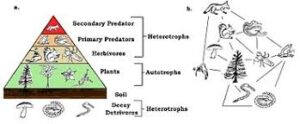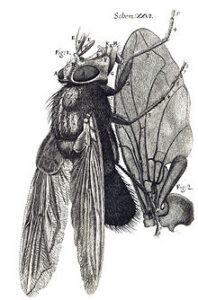School of Life-Science- The term “School of Life Science” typically refers to an educational institution or department within a university that focuses on the study of life sciences. Life sciences encompass a broad range of scientific disciplines that involve the study of living organisms and their interactions with each other and their environments. Some of the key branches of life science include biology, ecology, genetics, physiology, microbiology, and more.
A School of Life Science typically offers undergraduate and graduate programs in these fields and conducts research in various areas related to life sciences. Students studying in a School of Life Science may pursue degrees in biology, biochemistry, biotechnology, environmental science, or related disciplines, depending on the specific offerings of the institution.
The exact structure and offerings of a School of Life Science can vary from one university to another, and they may also be referred to by different names, such as “Department of Life Sciences,” “College of Life and Environmental Sciences,” or similar variations.
These institutions play a crucial role in advancing our understanding of living organisms and their interactions, and they often contribute to breakthroughs in fields like medicine, agriculture, conservation, and environmental science.
What is School of Life-Science
The term “School of Life Science” typically refers to an academic department or institution within a university or educational system that focuses on the study of living organisms and their various aspects. Life science is a broad field that encompasses the study of biology, ecology, genetics, microbiology, physiology, and related disciplines.
In a School of Life Science, students and researchers engage in the exploration and investigation of living organisms, their structures, functions, behaviors, and interactions with their environments. This can include research into areas such as:
- Biology: The study of living organisms and their processes, from cellular and molecular biology to ecology and evolution.
- Genetics: The study of genes, heredity, and genetic variation, including applications in genetic engineering and biotechnology.
- Microbiology: The study of microorganisms, including bacteria, viruses, and fungi, and their roles in health, disease, and the environment.
- Physiology: The study of the functioning of living organisms, including the mechanisms of bodily processes and systems.
- Ecology: The study of the interactions between organisms and their environments, including ecosystems, populations, and communities.
- Biochemistry: The study of the chemical processes and compounds that occur within living organisms.
- Biotechnology: The application of biological principles and techniques to develop new products and technologies, such as pharmaceuticals, genetically modified organisms, and more.
- Neuroscience: The study of the nervous system and how it functions in both health and disease.
- Pharmacology: The study of drugs and their effects on living organisms, including their use in medicine and healthcare.
- Environmental Science: The study of the environment, including its conservation, protection, and the impact of human activities on ecosystems.
A School of Life Science typically offers undergraduate and graduate programs, allowing students to pursue degrees in various life science disciplines. These schools also conduct research to advance our understanding of the natural world and to develop solutions to various scientific and societal challenges. The specific departments and areas of focus within a School of Life Science can vary from one institution to another, depending on their expertise and research priorities.
Who is Required School of Life-Science
“Life Science” is not the name of an individual; rather, it is a broad field of scientific study that encompasses the study of living organisms and their various aspects. Life science, also known as the biological sciences, is a branch of science that investigates the structure, function, behavior, and interactions of living organisms, as well as the systems and processes that support life.
Life scientists, also known as biologists, include researchers, educators, and professionals who work in various sub-disciplines of biology, such as genetics, ecology, microbiology, physiology, biochemistry, and many others. They study a wide range of topics, including the diversity of life on Earth, the mechanisms of evolution, the functioning of cells and organs, the relationships between organisms and their environments, and the impact of human activities on ecosystems and biodiversity.
The field of life science is vast and diverse, and it plays a crucial role in advancing our understanding of the natural world and addressing various scientific, medical, and environmental challenges. Life scientists contribute to discoveries in areas such as medicine, agriculture, biotechnology, conservation, and more. It’s not associated with a specific individual, but rather with a collective group of scientists and researchers dedicated to the study of life and living organisms.
When is Required School of Life-Science

“Life Science” is not something that occurs at a specific time or date. It is a continuous and ongoing field of study in the realm of science. Life science, also known as biology, is the scientific study of living organisms and their interactions with each other and their environments. It encompasses a wide range of topics and research areas and is conducted by scientists, researchers, and educators throughout the year.
Life scientists engage in research, experimentation, and exploration to better understand the complexities of living organisms, from the molecular and cellular level to ecosystems and biodiversity. They work on various aspects of biology, including genetics, physiology, ecology, microbiology, and more.
Life science is not limited to a particular time frame; it is a fundamental and continuous branch of science that contributes to our understanding of life on Earth and plays a crucial role in various scientific and medical advancements. Researchers in the life sciences conduct studies, experiments, and investigations year-round to expand our knowledge of the natural world.
Where is Required School of Life-Science
Life science is not located in a specific physical place or geographical location; rather, it is a broad and diverse field of scientific study that occurs worldwide. Life science encompasses the study of living organisms and their various aspects, and it is conducted in research institutions, universities, laboratories, and natural environments across the globe.
Life science research and education can be found in many countries and regions, and it covers a wide range of topics and disciplines, including biology, genetics, ecology, microbiology, physiology, biochemistry, and more. Life scientists work in diverse settings, from academic institutions to private companies, government agencies, and non-profit organizations.
Here are some common places and contexts where life science is conducted:
- Universities and Research Institutions: Many universities and research institutions have departments or schools dedicated to life sciences where researchers and students study and conduct experiments.
- Laboratories: Life science research often involves laboratory work, where scientists analyze biological samples, conduct experiments, and perform various tests.
- Field Research: Ecologists, environmental scientists, and other life scientists often conduct research in natural environments, such as forests, oceans, and ecosystems.
- Biotechnology Companies: Biotechnology companies focus on applying biological principles to develop new products and technologies, including pharmaceuticals and genetically modified organisms.
- Hospitals and Healthcare Facilities: Medical professionals and researchers in hospitals and healthcare facilities often engage in life science research related to human health and diseases.
- Government Agencies: Government agencies, such as the Centers for Disease Control and Prevention (CDC) and the Environmental Protection Agency (EPA), conduct life science research for public health and environmental purposes.
- Conservation Organizations: Organizations dedicated to the conservation of biodiversity and natural habitats often employ life scientists to study and protect endangered species and ecosystems.
- Agricultural Research Centers: Research centers focused on agriculture and food production conduct life science research to improve crop yields and develop sustainable farming practices.
- Pharmaceutical Research and Development: Pharmaceutical companies conduct life science research to develop new drugs and therapies.
- Biological Museums and Botanical Gardens: These institutions often serve educational and research purposes, allowing scientists and the public to study and appreciate the diversity of life.
In summary, life science is a global field of study, and its research and education are not confined to a specific location. It is carried out wherever scientists and researchers work to understand and explore living organisms and the natural world.
How is Required School of Life-Science
Life science is a complex and multifaceted field that encompasses the study of living organisms and their various aspects. It is conducted through a combination of scientific methods, research techniques, and educational approaches. Here’s how life science is typically conducted:
- Observation: Life scientists begin by observing living organisms and their environments. This can involve fieldwork in natural settings, microscopic examination, or the use of specialized instruments to gather data.
- Hypothesis Formation: Based on their observations, scientists develop hypotheses or educated guesses about specific biological phenomena or questions they want to investigate.
- Experimental Design: Researchers design controlled experiments to test their hypotheses. Experiments are carefully planned to isolate variables and generate reliable data.
- Data Collection: During experiments, data is collected through measurements, observations, and recordings. This data can include quantitative measurements, qualitative descriptions, and images.
- Analysis: Scientists analyze the collected data using statistical and computational methods. This helps them identify patterns, trends, and relationships within the data.
- Interpretation: Researchers interpret the results of their experiments in the context of their hypotheses. They determine whether the data supports or refutes their initial ideas.
- Peer Review: To ensure the validity and reliability of scientific findings, research is often subject to peer review. Other experts in the field assess the research methodology, data, and conclusions before publication.
- Publication: If research passes peer review, it is published in scientific journals or presented at conferences. This dissemination of knowledge allows other scientists to build upon the findings.
- Continued Research: The field of life science is dynamic and constantly evolving. Scientists continue to ask new questions, refine hypotheses, and conduct further research to expand our understanding of living organisms.
- Education: In addition to research, life science is also disseminated through education. Universities and educational institutions offer degree programs and courses in various life science disciplines to train future scientists and professionals.
- Application: Life science findings have practical applications in various fields, including medicine, agriculture, biotechnology, environmental conservation, and more. Scientists work on translating research into real-world solutions.
Life science is a collaborative and interdisciplinary field. Researchers often work together from various sub-disciplines (e.g., genetics, ecology, microbiology) to address complex biological questions. This multidisciplinary approach is crucial for gaining a comprehensive understanding of the diversity of life on Earth and addressing global challenges related to health, the environment, and biodiversity conservation.
Case Study on School of Life-Science
Understanding Bee Colony Collapse Disorder (CCD)
Background: Bee Colony Collapse Disorder (CCD) is a significant concern in agriculture and ecology. CCD is characterized by the sudden and widespread disappearance of worker honeybees from beehives, leading to the decline of entire bee colonies. This phenomenon has serious implications for pollination of crops, which relies heavily on honeybee populations.
Research Question: A team of life scientists and entomologists seeks to investigate the underlying causes of CCD and develop strategies for its prevention and management.
Methodology:
- Field Surveys: Researchers conduct field surveys in various regions to identify areas experiencing CCD. They collect data on affected bee colonies, environmental conditions, and agricultural practices.
- Hive Monitoring: In collaboration with beekeepers, researchers install sensors and monitoring equipment in beehives to track bee behavior, temperature, humidity, and pesticide exposure.
- Genomic Analysis: Geneticists analyze the DNA of bees from affected colonies to identify genetic factors that may make certain populations more susceptible to CCD.
- Pesticide Analysis: Chemists analyze samples of pollen, nectar, and bees for pesticide residues. This helps determine if exposure to specific chemicals is a contributing factor.
- Microbiome Analysis: Microbiologists study the gut microbiomes of bees to investigate the role of microbial communities in bee health and immunity.
Results:
- Pesticides: The research reveals that exposure to neonicotinoid pesticides is a significant factor in CCD. Findings prompt policy changes to restrict the use of these pesticides in agricultural areas with high bee activity.
- Genetic Factors: Genetic analysis identifies certain bee populations with genetic predispositions to CCD. Breeding programs are initiated to select for more resilient bee strains.
- Microbiome Insights: Microbiome analysis reveals that healthy bee colonies have diverse gut microbiomes. Efforts to restore bee health include the development of probiotic supplements for bees.
Application:
- Agricultural Practices: Farmers adopt pollinator-friendly farming practices, such as planting cover crops and reducing pesticide usage, to support bee populations and improve crop yields.
- Policy Changes: Government agencies enact regulations to restrict the use of harmful pesticides near pollinator habitats.
- Beekeeper Education: Beekeepers receive training on best practices for hive management and disease prevention.
Conclusion: This case study demonstrates how multidisciplinary research in the life sciences can help address a pressing issue like Bee Colony Collapse Disorder. By combining genetics, environmental science, microbiology, and chemistry, scientists can gain insights into the causes of CCD and develop strategies to mitigate its impact on agriculture and ecosystems. These findings not only benefit bee populations but also contribute to sustainable agriculture and biodiversity conservation.
Please note that this is a simplified and hypothetical case study. In reality, CCD is a complex issue with ongoing research, and the solutions may involve even more interdisciplinary collaboration and long-term efforts.
White paper on School of Life-Science
A white paper is typically a comprehensive and authoritative document that addresses a specific issue, provides information, and offers solutions or recommendations. Here’s an outline you can use as a starting point for creating a white paper on life science:
Title:
- A Clear and Informative Title Reflecting the White Paper’s Focus
Abstract:
- A Brief Summary of the White Paper’s Key Points and Findings
Table of Contents:
1. Introduction:
- Briefly introduce the topic of life science.
- Explain the purpose and scope of the white paper.
- Provide an overview of the key issues or questions addressed.
2. Background and Context:
- Explore the historical development of life science.
- Discuss the significance and relevance of life science in contemporary society.
- Provide context for the challenges and opportunities in the field.
3. Key Sub-Disciplines of Life Science:
- Describe major branches of life science, such as biology, genetics, ecology, microbiology, and more.
- Explain the unique contributions and focus areas of each sub-discipline.
4. Current Challenges and Issues:
- Discuss the pressing challenges and issues faced by the life science community.
- Address topics like biodiversity loss, emerging diseases, ethical concerns (e.g., genetic engineering), and sustainability.
5. Research and Innovation:
- Highlight recent breakthroughs and advancements in life science research.
- Discuss how technology, genomics, and big data are shaping the future of life science.
6. Biotechnology and Its Impact:
- Explore the role of biotechnology in various applications, such as medicine, agriculture, and environmental conservation.
- Discuss ethical considerations related to biotechnological innovations.
7. Environmental Conservation and Sustainability:
- Explain how life science contributes to understanding and addressing environmental issues.
- Discuss conservation efforts, climate change research, and sustainable practices.
8. Medical Discoveries and Healthcare:
- Highlight key medical breakthroughs and advancements driven by life science.
- Discuss the role of life science in disease research, drug development, and personalized medicine.
9. Education and Workforce Development:
- Address the importance of life science education and training.
- Discuss the skills and knowledge required for careers in life science.
10. Future Directions and Trends:
- Predict the future of life science and potential areas of growth.
- Discuss emerging trends like synthetic biology, regenerative medicine, and personalized genomics.
11. Recommendations and Solutions:
- Offer practical recommendations for addressing current challenges and fostering growth in life science.
- Discuss policy considerations, funding priorities, and international collaboration.
12. Conclusion:
- Summarize the key takeaways from the white paper.
- Emphasize the importance of continued research and innovation in life science.
References:
- List all the sources, studies, and references cited in the white paper.
Appendices (if necessary):
- Include supplementary information, charts, graphs, or data that support the content.
Remember that a white paper should be well-researched, objective, and informative. It can be a valuable resource for policymakers, educators, researchers, and anyone interested in the field of life science. Be sure to provide evidence and data to support your statements and recommendations throughout the document.





